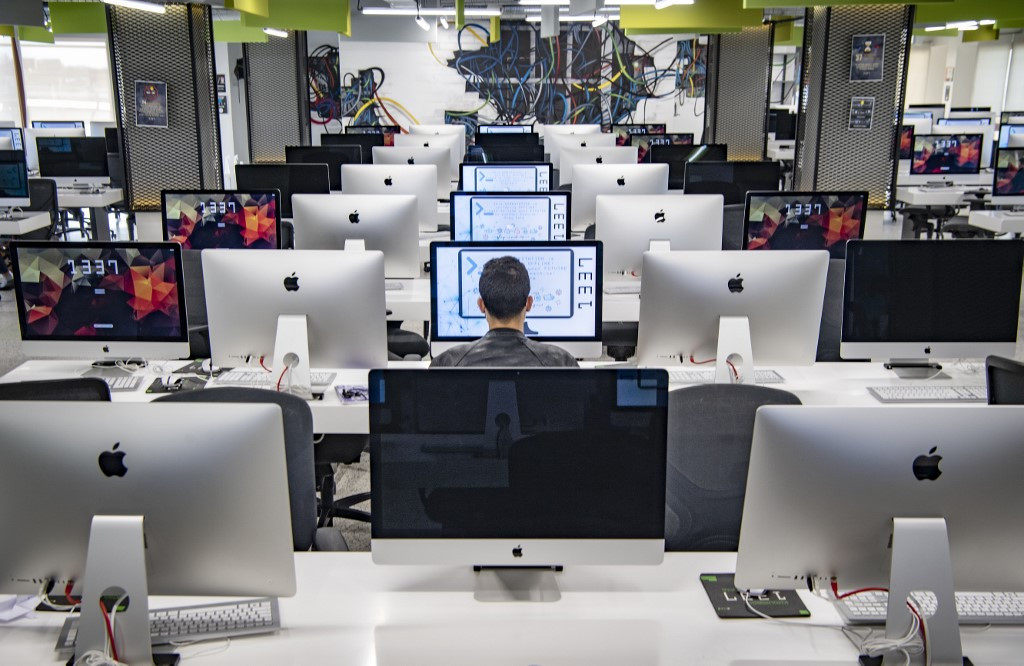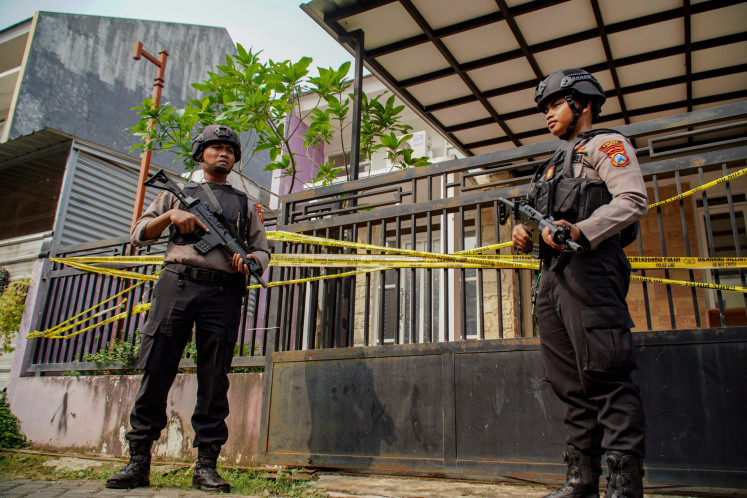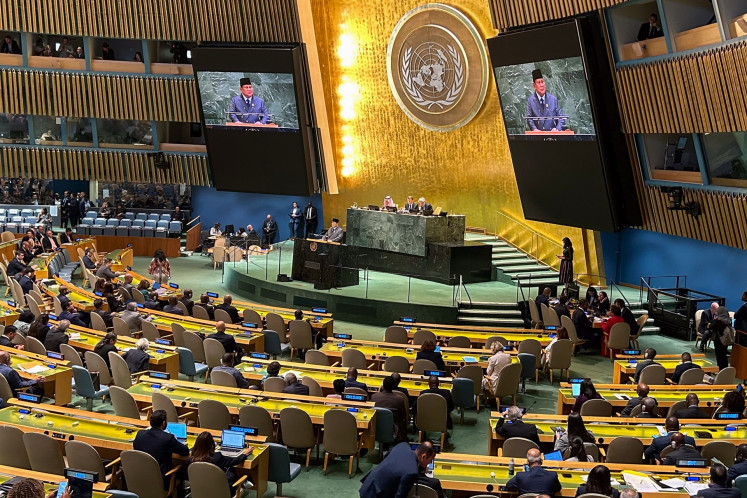Popular Reads
Top Results
Can't find what you're looking for?
View all search resultsPopular Reads
Top Results
Can't find what you're looking for?
View all search resultsSmart screens, familiar flaws
Flashy devices often end up unused or misused in schools with no technical support, little training and no curriculum integration.
Change text size
Gift Premium Articles
to Anyone
T
he government’s promise to equip more than 330,000 schools with smart screens may sound like a bold leap forward in education reform, but it also feels like a chilling case of déjà vu.
President Prabowo Subianto announced the plan with fanfare, saying during a recent school visit: “We have started the distribution, but at the moment, we can only provide one smart digital screen for one school […]. This year, we hope 330,000 schools will receive the screens.”
For many observers, the numbers are not impressive, but rather concerning.
A nationwide digital procurement of this scale, funded through the state budget’s mandatory education allocation, evokes the recent memory of the Chromebook procurement scandal.
Once touted as a game-changing intervention under then-education minister Nadiem Makarim, the initiative was ultimately marred by poor oversight and corruption. The former minister himself now faces trial over graft allegations tied to the project.
One would assume the lessons have been learned, but this latest government initiative suggests otherwise.
From the start, the smart screen rollout has been criticized for its top-down logic, framed as a “solution” to education inequality without addressing core deficits: underpaid teachers, outdated curricula, failing infrastructure and inconsistent internet access across the archipelago.
The argument seems to be that technology, if dropped into classrooms from above, will magically close the gap.
This is not a new belief. It is, in fact, a symptom of how education is too often treated as an object of patronage.
For President Prabowo and his circle, the instinct to intervene with centralized hardware deployments may well reflect their long-held governance style, one that emphasizes authority and visibility over evidence and outcomes.
But good intentions alone do not correct systemic flaws.
As education experts have pointed out, flashy devices often end up unused or misused in schools with no technical support, little training and no curriculum integration.
“There’s no point putting high-tech hardware in classrooms where even basic needs, electricity, clean water, blackboards, are not met,” said education analyst Indra Charismiadji in May.
Critics, including teachers’ groups and education NGOs, argue the funds would be far better spent on training teachers, hiring more staff or investing in open-access educational content platforms that can be accessed via mobile phones, especially in urban areas where smartphone penetration is already high.
Prabowo himself has acknowledged the potential for mobile-first education delivery. “With these smart screens, we want students to be able to access lessons anytime and anywhere, including via smartphones,” he said.
If so, then why spend so much on screens when we could be paying for great teaching to reach more learners through already-accessible channels?
The government’s budget transparency remains a major concern. Details about who will supply these screens, how much they will cost per unit and how schools will be selected remain unclear.
The risk of misallocation is high, especially given Indonesia’s checkered past with education procurement: Textbooks, laptops, even exam outsourcing.
If we are truly to prevent another scandal, this administration must not only ensure greater transparency, but also act in good faith with the education community.
The temptation to leave a legacy through hardware rollouts is real. But the true test of leadership lies in whether we can design interventions that endure beyond political cycles and resist the urge to measure progress by sheer numbers.
There is still time to shift direction. The Prabowo administration could reconsider how best to deliver on its promise of access and quality, by inviting public scrutiny, enhancing teacher support and strengthening the underlying system rather than bypassing it.
A better use of technology is not to duplicate it in every classroom, but to broadcast the best lessons from the nation’s finest teachers through open-access channels, directly to the devices already in most students’ pockets.
We cannot afford repeating another mistake, not when the future of education is at stake.











